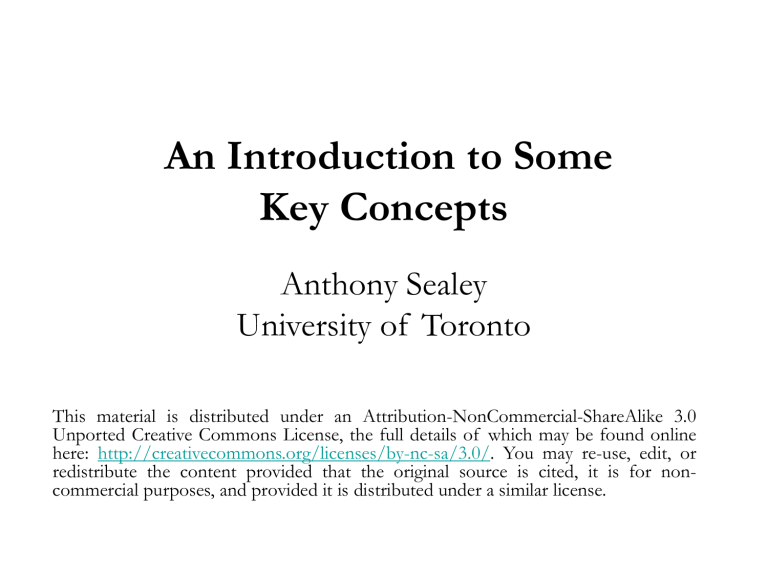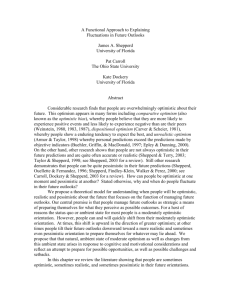Introduction

An Introduction to Some
Key Concepts
Anthony Sealey
University of Toronto
This material is distributed under an Attribution-NonCommercial-ShareAlike 3.0
Unported Creative Commons License, the full details of which may be found online here: http://creativecommons.org/licenses/by-nc-sa/3.0/ . You may re-use, edit, or redistribute the content provided that the original source is cited, it is for noncommercial purposes, and provided it is distributed under a similar license.
Key Concepts to be Discussed
1) Theories, Concepts and Variables
2) Measures and Indicators
Theories, Concepts and Variables
• In the social sciences, we use the term
‘theory’ to refer to explanations of observable regularities or patterns.
• Theory tell us why what we know to be true is true.
e.g. Some people believe that Canadian political culture is more ‘deferential’ than American political culture and that Canadians are more likely to favour a greater level of government intervention that Americans.
Seymour Martin Lipset’s ‘Formative
Events’ theory suggests that this difference can be explained by the differences in the events which led to the creation of these two countries. While the United States was an outcome of a violent revolution against the British government, the Canadian state was created peacefully.
• ‘Concepts’ can be thought of as theoretical building blocks which we use to build theories. Concepts are often quite abstract, but can also be quite concrete.
e.g. ????
• ‘Concepts’ can be thought of as theoretical building blocks which we use to build theories. Concepts are often quite abstract, but can also be quite concrete.
e.g. Power, democracy, left- vs. right-wing, feminism, moral traditionalism
• Broadly speaking, a ‘variable’ is anything that can take on a variety of possible values. The creation of variables is an important step toward the operationalization of a concept.
• When we operationalize a concept, we provide a specific definition of it that allows us to measure it. The creation of specific variables helps us to do this.
e.g. For the purposes of this analysis, a
‘war’ is any armed conflict in which at least 1000 people killed in armed conflict in a given year.
Measures and Indicators
• A measure is a variable that has been constructed in order to operationalize a specific concept.
• An indicator is a variable that is combined with other indicators in order to create a measure.
e.g. Creating a Measure for ‘Social
Progressivism’
Social
Progressivism
Outlooks on
Gay Rights
Outlooks on
Prostitution
Outlooks on
Abortion
• Notice that in some case, a given variable can be conceived of as either a measure or an indicator. e.g. ‘Outlooks on gay rights’ can be used either as a measure of ‘homophobia’ or an indicator of a measure of ‘social progressivism’.










